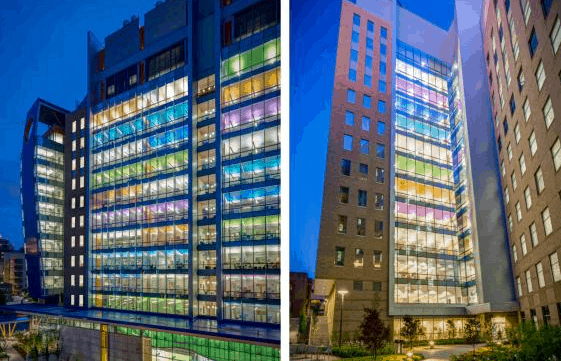Blog
Clinical Sciences Pavilion at Cincinnati Children’s Hospital Medical Center

In July, 2015, the Cincinnati Children’s Hospital Medical Center opened the doors to its new state-of-the-art Clinical Sciences Pavilion. The research building is 465,000-square-feet and is 14 stories high.
The design team used clear glass throughout the building in order to utilize the natural daylight and create an open feeling. The lowest floor is underground, however, the ground adjacent to the building was excavated in order to create an outdoor courtyard, which allows natural light in and views out of the Galleria atrium that serves as the clinic waiting area.
Healthcare Design Magazine has a photo tour and article on this new facility. To read the article and view the photos, click here.

A new landscaping plan includes a two-sided water feature along the exterior circulation path between the clinical and research sides of Cincinnati Children’s campus. Photo by Joe Harrison, JH Photography Inc.

One second side of the fountain drops into a lower exterior garden, which was added to bring daylight and views to the lower floors and the Galleria Atrium. The same light poles are used to provide light in the atrium as well as in the exterior landscaping and some of the same furniture pieces are used on the interior and exterior to blur the line between inside and outside. Photo by Joe Harrison, JH Photography Inc.

The atrium includes several zones of waiting spaces, including a more traditional waiting zone (foreground) for short-term seating. The planter wall is a work zone with banquette seating, and the far end of the space is a kid’s play area. Photo by Joe Harrison, JH Photography Inc.

Wet-lab spaces utilize wood materials and warm tones, as well as views to the outside. Bench space in the lab is mirrored with technician write-up space outside of the lab area. Organization of the ceiling plane and a flooring pattern that’s consistent between these areas further promote continuity and connection between the two work zones. Photo by Joe Harrison, JH Photography Inc.
Source: Healthcare Design Magazine







